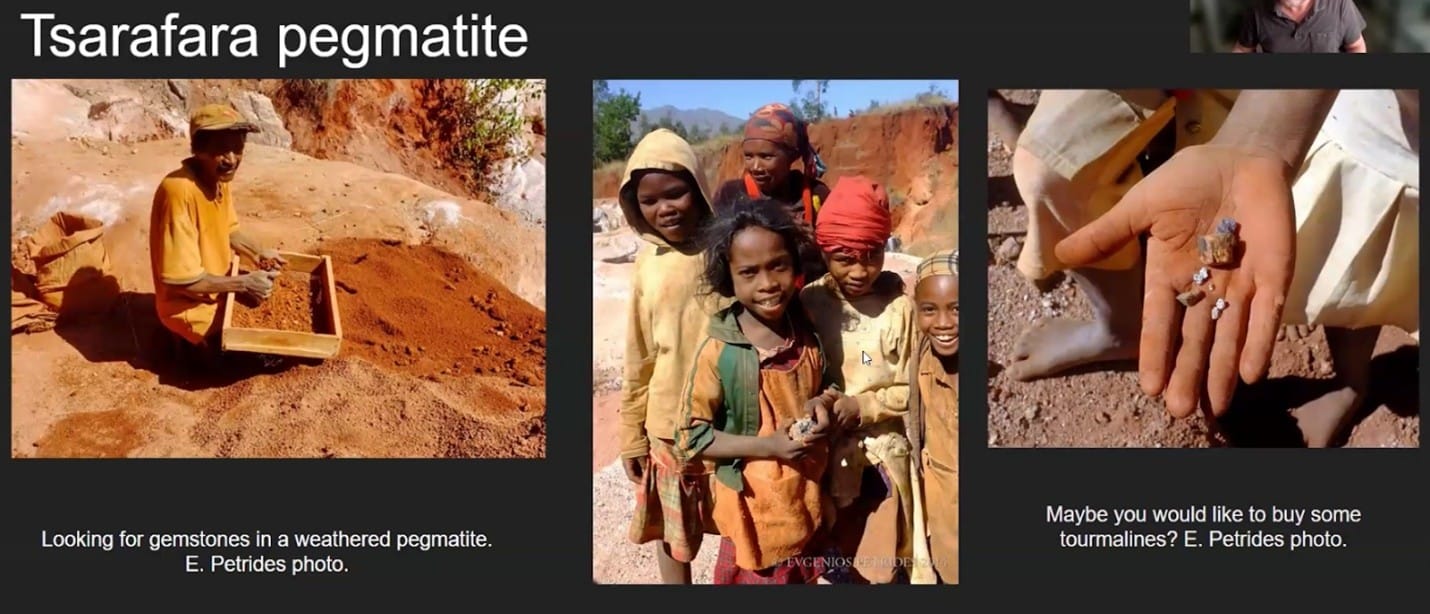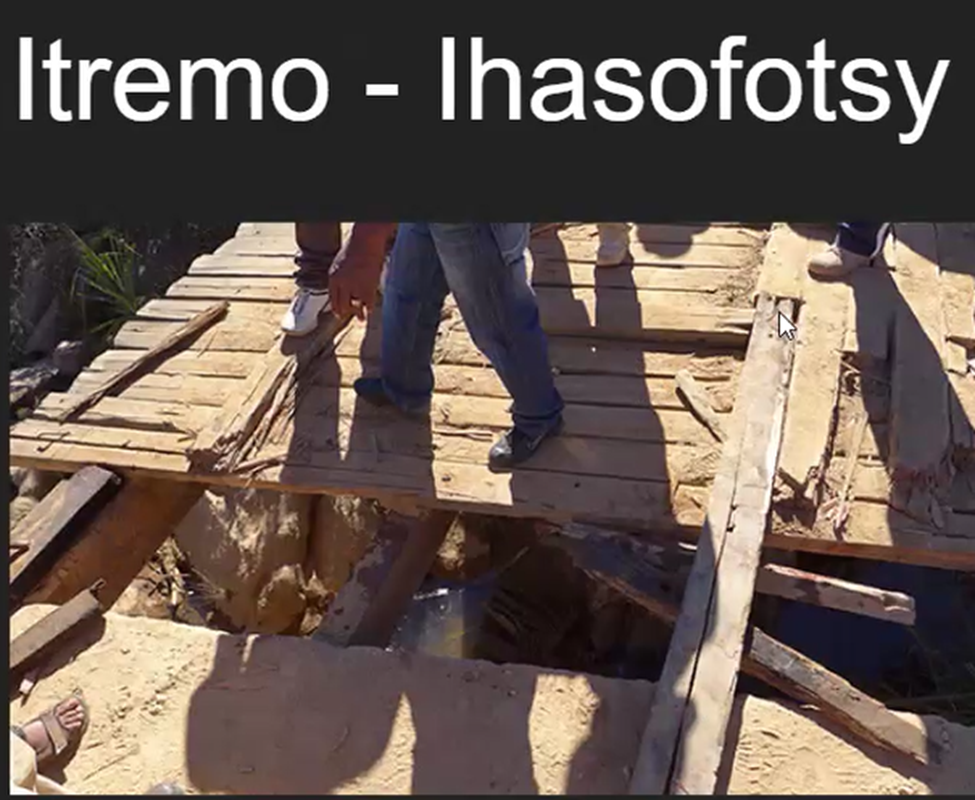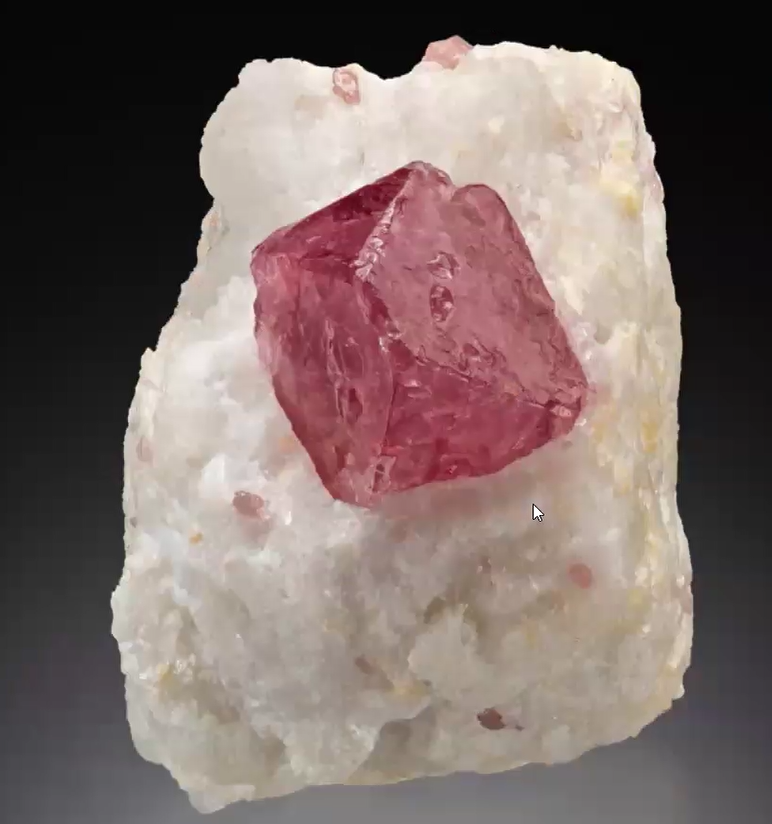Mineral Collecting Around the World, presented by Casper Voogt
Synopsis by Andy Thompson, MSDC Secretary

“This is a whirlwind tour” Casper said in introducing his presentation sharing his international field trips where he collected minerals in eight countries. He said he would conclude by describing his visits to three of his favorite international gem shows.
Readers: The purpose of this synopsis is to encourage you to go to MSDC’s YouTube channel so you can experience Casper’s presentation first hand. Click on the link HERE which takes you to his talk which last just over one hour.
Morocco
The first stop on Casper’s tour was Morocco in 2012 starting with the city of Marrakech. That trip, as many he participated in over the past dozen years, was sponsored by Mindat.org. He praised this well known organization as a great resource for information on minerals, discussion groups, and international field trips. While in Morocco, Casper said he participated in only a few of the talks during the two-day conference. Instead, with like-minded friends, he visited local mining sites in search of minerals.
A 40-kilometer taxi trip out of town brought them to a desert mining district. Shown below is a hole in the ground leading to a maze of tunnels which he characterized as having inadequate safety measures.

Below ground, they searched for minerals side-by-side with local miners who lived underground in cave-like spaces the residents themselves hollowed out.

Madagascar
Two years later (2014), Casper traveled to the island nation of Madagascar off the east coast of Africa. “I went there to see the wildlife. You can’t go to Madagascar and not do that.”

While visiting the small rural municipality of Ranomafana, he photographed the gecko and lemur pictured above. The lemur showed special interest in Casper’s camera and twice accurately “marked” it with considerable marksmanship.
Below is an example of the world’s largest variety of moth, the yellow comet which grows to 25 cm across. The Brookesia chameleon to the right is known as being the world’s smallest variety (2-3 cm).

On his second day in Madagascar, his mineral collecting team was a convoy of 16 four-wheel drive vehicles which entered the Mahaiza Mineral Market.

He noted that the first and last SUVs were their security escorts consisting of four men carrying AK-47s. The visitors’ arrival was well advertised so local mineral sellers and food merchants turned out in abundance.

“The market came to us” Casper said. Despite this, there was little time for buying minerals but he did pick up a few specimens.


On the third day, they visited Tsarafara, an area known for pegmatites. The locals, below, screened for minerals (left), and children and adults offered to sell tourmalines they found.

On their 5th day in Madagascar they visited a town known for quartz. But getting to and from the small town of Itremo-Ihasofotsy presented some serious time-delaying logistical problems.

One obstacle which considerably slowed them down was getting their 16-vehicle convoy across a gully that required repairing the flimsy local bridge, disembarking all the riders, and taking each vehicle across one at a time. Once at the mining site, Casper took the “elevator” down one flight to the bottom of the shaft where he did see a large tourmaline about one foot by three feet in length.
On day 15 they visited the “Big Tsingy” famous for its deep crevices of skarn which consist of limestone eroded by water. The photo below shows Casper exploring one crevice. Later he visited several of the local caves.

Though not collected on this trip, below is a beautiful Madagascar quartz crystal Casper later obtained.

Myanmar/Burma (2018)

This Mindat-sponsored 2018 trip began with everyone flying into the southern town of Yangon and making their way to the northern tip of the nation to the Magok ruby mining region.
Below are examples of gemstones for which the nation is famous, particularly for its rubies, Burmese spinel, and jadeite. “These are faceted. I’m interested in minerals, personally, in natural form,” so not cut or polished.

Below are examples of topaz minerals Casper picked up in Yangon. He noted the seemingly large crystal on the left with the inclusions, probably schorl, is actually smaller than it appears in the photo, only a few centimeters tall.

His best spinel, below, as well as the “really tiny” ruby cluster, are both from Mogok. They illustrate his love of “seeing a specimen in context,” still in its natural matrix or cluster, in contrast to minerals that are were removed from their matrix, and “floaters” that formed within a pocket and were never attached to a host rock.


Throughout his presentation, Casper shared stunning photos of the regions he was visiting. Below, for example, is a photo he took north of Mandalay, in central Myanmar (Burma) which was simply “beautiful.”

Although most of his fellow travelers visited the tiny mineral shops in town, Casper said he and a few fellow collectors were more interested in seeing the temple on the top of the mountain. So, they hiked up and discovered that the sanctuary at the top was for men only.
Back down at Mandalay’s ground level, they visited a jade market seen below. “At this jade market there was jade rough everywhere.” The workers trimmed and polished the specimens for commercial sales.

Casper and his fellow collectors then went to the Mogok Valley in the north, the heart of the mineral industry. He noted the gem industry accounted for half of Myanmar’s GDP and was tightly controlled by the government. To gain entrance to the Mogok mining area they had to fill out paperwork, effectively getting a second visa, as shown below.

Then they were free to enter “Ruby Land” as noted by the welcome sign below.

Despite the rain and muddy road, they made their way by truck and walking to the bottom of the Mogok valley. A miner’s hut provided shelter and hot tea.

While there, they saw various levels of mechanization. One topaz mine entrance shown below used the now familiar “elevator” for transporting miners and minerals.

Their Myanmar and Mogok trip concluded with a visit to a more mechanized mine for sapphires and other minerals which used a sluice as shown below.

Kola Peninsula, Russia 2017

Casper and his fellow travelers began this trip by flying into Moscow. They then headed north by train to St. Petersburg and took in some of the culture and sites.

On arrival at the Kola peninsula they visited multiple industrial mines, with some providing extensive safety instructions and professional guides. Other mine sites had ceased operations or changed their original purpose. The Kovdor mine pictured below had long been productive for its iron.

Casper said it helps to get a sense of the scale of this operation by realizing that the trucks shown below use wheels that are twice the size of a grown adult. While on the floor of this deep open pit mine, Casper collected magnetite on calcite specimens.

More recently this site has been repurposed. To learn the interesting reason why this site is no longer mining for iron go to the video of Casper’s presentation.
Hint: it has something to do with the mysterious secretive black powder pictured below which was not an authorized part of the Russian government’s controlled tour.

Another visited site was the abandoned Umbozero mine which pre-1977 yielded a trove of “weird and ugly” minerals named below.


As the above and below photos suggest, this site has ceased production, perhaps having closed in the 1970s. But Casper did buy some salt-based mineral (villiaumite) from a local miner.

Yet another mining site was frigid Kirovsk where late one night a fellow traveler photographed the northern lights with a shooting star pictured in the foreground.

Namibia, Africa 2018
This trip to Tsumeb, Namibia was a self-directed expedition of friends who Casper met on earlier Mindat-organized trips. So it was not Mindat-sponsored. Casper said that for him, going there was more like a pilgrimage to a once-famous mining site, than it was for any collecting. It being Africa, however, seeing and photographing the wildlife, as below, was high on Casper’s list.

Collecting minerals there was not a high expectation. The once working pits, such as the one pictured below, are now defunct.

Visitors can pick over the surface dumps and, as the collectors below, perhaps find some green dioptase crusts.

Having checked out this legendary site, they headed toward Hohenstein. There, from a local roadside seller, he bought a small aquamarine, for which the area is known.

The local miners lived atop a high hillside and practically never left because their place would be taken by others. Knowing that, Casper’s group traveled with tools, medicines, and other necessities to barter and trade for minerals. Casper said there was not much to see locally. The “mine” was basically a cave. The collectors planned to return in 2020 but covid blocked that from happening.
Favorite Mineral Shows
Noticing that his time for presenting to the group was running out, Casper made brief mention of his visits to several of his favorite international mineral exhibits and shows, including:
• London, Natural History Museum,
• Cyprus,
• Tucson Arizona,
• Munich Germany, and
• Sainte-Marie Aux Mines in France.
London
The British Natural History Museum is extensive and includes the mineral hall.


The specimens are arranged by their chemical composition, such as “halides” and “rutile” shown below.


If you want to discover why the Museum’s dendritic crystals of salammoniac on shale specimen below captured Casper’s attention, go to the YouTube video.

On that same trip, he visited the Netherlands and shared information both personal and historical, such as Napoleon’s desire for strategic advantages, including the use of limestone to make cement.

Cyprus 2023

While on his way to Munich, Casper visited the Greek side of Cyprus where he engaged his interest in archeology by visiting a 4th century palace ruin at Nea Paphos.

A friend took him into the mountains to the north in search of shiny, gemmy serpentine, examples of which are shown below.


Below are further descriptions about three of his favorite mineral shows.

Tucson, Arizona
Reader: If you are thinking of going to the Tucson show sometime and want to know why, when, and how to go there, find lodging, and identify local attractions, go to the YouTube video for Casper’s practical advice.

Of the dozens of individual shows that make up the Tucson show (listed below), the Mineral City show, housed in purpose-built buildings just for minerals, contains a large concentration of mineral dealers from all around the world. The buildings were built specifically to display minerals and are dedicated year-round to the mineral dealers who can store their minerals there securely within their dedicated spaces. And, on special request, the dealers can have their own shows during the year.
The Tucson Convention Center show is sponsored by the Tucson Gem and Mineral Society and is more geared towards the general public. Historically, it has been the largest and most prestigious of the shows. It is held over a four-day period during the final week of the Tucson show.

He also showed lots of “eye candy” on exhibit.

Below is a giant selenite on the left which was on sale for one million dollars. On the right is a four-foot tall rubellite from the Jonas Mine.

The amount of minerals available for viewing and sale at the many Tucson shows is always mind-boggling. Another beautiful exhibit is shown below.

Munich, Germany 2024

Last October, Casper was able to visit Germany and see the second of his favorite three mineral shows. He called attention to the cool displays including the “impossible minerals,” tiny (cumengeite) and large (aqua), calcite, barite, and Madagascar sanadine specimens, shown below.


Sainte-Marie aux Mines, France, Alsace-Loraine

Casper’s third favorite mineral show is designated in red on the above map.

“It is more like a street fair with a cozy village atmosphere in comparison with the other shows.”


He offered the following practical strategies and tips for mineral shopping.

Question and Answer Session
With that, Casper concluded his presentation and immediately questions and stories began being shared. One was about how to get the minerals safely through airport inspections. “It’s different in every country,” Casper noted and gave interesting examples based on his personal experiences.
Dave shared his experiences with the Tucson airport inspections. Casper described the Russian system with its required inspection by knowledgeable university-based mineralogists and the requirement of documenting each mineral.
Madagascar wanted completed paperwork and a bribe. Namibia initially required handing over the minerals for a week or so to the Department of Mines prior to departing the country. While Casper was there, the law suddenly changed and reduced to inspection time by, on the day of departure, submitting specimens to the Department of Mines within the airport.
The MSDC audience also asked about Casper’s experiences with specific mining sites in the southern state of Georgia. He explained the positives and negatives of several sites with which he was familiar.
MSDC’s Vice President for Programs, Kenny Reynolds, thanked Casper for sharing his extraordinary presentation of his personal experiences with international collecting sites and mineral shows. The Zoom audience applauded with gratitude.
Note: Casper has invited interested readers to view his entire slide presentation at their leisure (no narration) on their own time by visiting https://tinyurl.com/u82jucp, a redirect to his Google Slides presentation.

